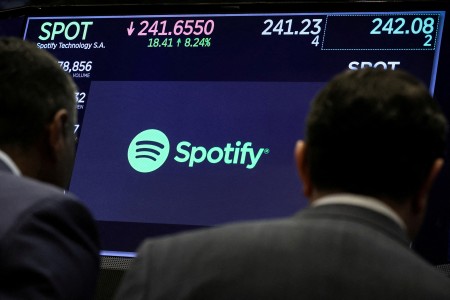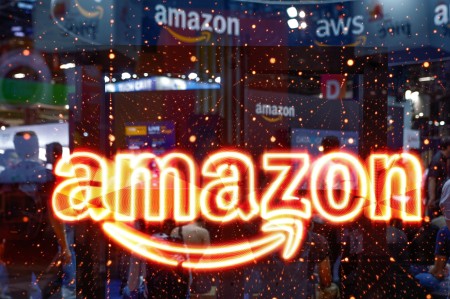By Sinéad Carew, Sruthi Shankar and Johann M Cherian
(Reuters) – Wall Street’s three major indexes advanced solidly on Friday, with the tech-heavy Nasdaq boasting its biggest first-half gain in 40 years as inflation showed signs of cooling while Apple closed with a $3 trillion market valuation for the first time.
Apple Inc breached the $3 trillion mark for the first time since January 2022, adding 2.3% to close at $193.97 after hitting a record of $194.48. It was lifted by growing appetites for growth stocks generally as well as bets the iPhone maker will succeed in new markets.
Investors perked up for the last day of the second quarter on signs of cooling U.S. inflation from measures that are closely watched by the Federal Reserve.
A Commerce Department report showed the Personal Consumption Expenditures (PCE) index advanced 3.8% versus April’s 4.3%. Excluding volatile food and energy, the core PCE index gained 0.3%, down from 0.4% in the previous month.
The data fueled hopes the Fed could be near the end of its rate-hiking cycle. It helped that Treasury yields fell in response to cooling inflation, said Burns McKinney, portfolio manager at NFJ Investment Group in Dallas, Texas.
“Everything is going up because you’re seeing the economy cooling but not that much. The Fed might have a better-than-we-thought shot of threading the needle and cooling inflation without killing the economy in the process,” said McKinney.
The money manager said he still does not think the Fed can dampen inflation without causing a recession, but “the chances are going up.”
The Dow Jones Industrial Average rose 285.18 points, or 0.84%, to 34,407.6, the S&P 500 gained 53.94 points, or 1.23%, to 4,450.38 and the Nasdaq Composite added 196.59 points, or 1.45%, to 13,787.92.
The Nasdaq registered its strongest first-half performance in 40 years with a more than 31% gain. The Nasdaq 100 index of top technology stocks boasted its biggest first half gain on record, adding around 39%.
The S&P 500’s growth index rose 1.4% on Friday. The biggest boosts to the S&P 500 behind Apple were other investor favorites such as Microsoft, Nvidia, Amazon and Meta Platforms. These added between 1.6% and 3.6%, extending blistering rallies fueled by strong earnings and a buzz around artificial intelligence.
All the S&P 500’s 11 major industry sectors advanced, with technology leading the charge, up 1.8%. Real Estate was the weakest, up 0.5%.
For the week, the S&P 500 added 2.35% while the Nasdaq added 2.20% and the Dow climbed 2.02%. For the quarter, the S&P 500 added 8.3% while the Nasdaq climbed 12.8% and the Dow rose 3.4%.
Small cap stocks were also attracting attention with the Russell 2000 index closing up 0.4% in its fifth straight day of gains, its longest winning streak since the five sessions ending March 3.
Still, traders were pricing in an 84.3% chance that the Fed will hike rates by 25 basis points to 5.25%-5.50% range in its July meeting, according to CMEGroup’s Fedwatch tool, down slightly from the 89.3% on Thursday.
Hawkish remarks from Fed Chair Jerome Powell and strong economic data earlier this week boosted bets the Fed would keep hiking rates, but stock markets took comfort in signs of strength in the U.S. economy as inflation cooled.
The CBOE Market Volatility Index, Wall Street’s fear gauge, closed up 0.05 points at 13.59 after earlier slipping to a one-week low at 12.96 points.
Among single stocks, Nike Inc fell 2.6% after it forecast first-quarter revenue below Wall Street expectations.
Carnival Corp shares jumped 9.7% after Jefferies upgraded the cruise operator’s stock to “buy” from “hold”.
On U.S. exchanges 10.36 billion shares changed hands compared with the 11.29 billion moving average for the last 20 sessions.
(Reporting by Sinéad Carew in New York, Sruthi Shankar, Johann M Cherian and Shashwat Chauhan in Bengaluru; Editing by Shinjini Ganguli and David Gregorio)




